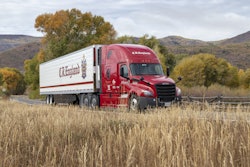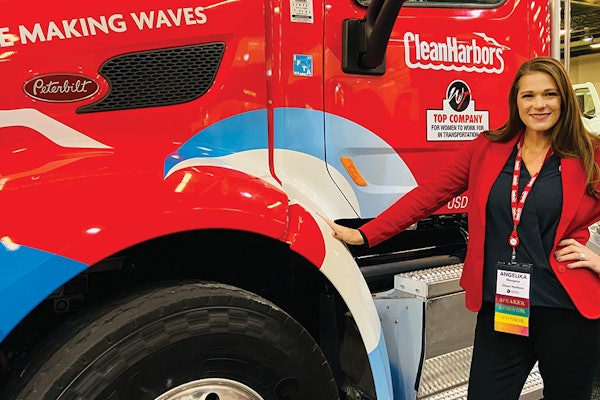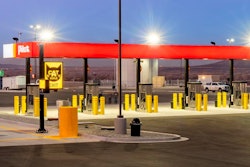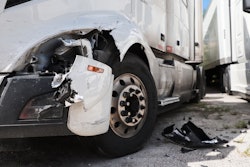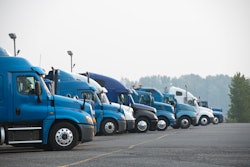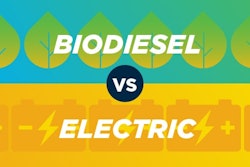
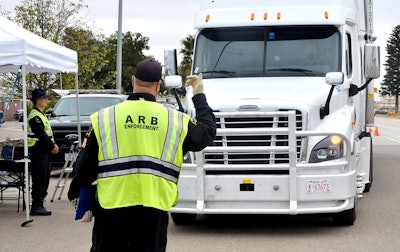 California’s Air Resources Board (CARB) in June passed a rule calling for all commercial trucks and vans sold in the state to be zero-emissions by 2045.
California’s Air Resources Board (CARB) in June passed a rule calling for all commercial trucks and vans sold in the state to be zero-emissions by 2045.The 2021 model year represents the first phase of Greenhouse Gas (GHG) Phase 2 emissions requirements, new measures that step up from the current level – which were enacted for the 2017 model year – and increase incrementally in model-year 2024 before phasing in completely by model-year 2027.
Once fully phased-in, according to the Environmental Protection Agency (EPA), the standards will achieve up to 24% lower CO2 emissions and fuel consumption compared to Phase 1.
Air quality regulations are nothing new to this industry, but the years ahead could be far more complex than slapping on an aftertreatment system and filling up a DEF tank.
California’s Air Resources Board (CARB) in June passed a rule calling for all commercial trucks and vans sold in the state to be zero-emissions by 2045. Half of all trucks sold in The Golden State must be zero-emissions by 2035, and OEMs are charged with getting some sales of zero-emissions units off the ground by 2024.
The biggest ecological concern of my childhood was a hole in the ozone layer – an environmental anomaly caused by aerosol sprays and Styrofoam McDLT containers, or so I thought. If you bought hairspray in the mid-’80s in Midfield, Alabama, there is a better-than-average chance that I watched you place it in your buggy with scorn.
We’re still waging war on behalf of Mother Earth 30 years after McDonald’s forewent keeping the hot, hot and the cool, cool.
By the late ’90s, use of chlorofluorocarbons – the chemicals that were actually degrading the ozone layer (apologies to McDonald’s) – as a propellant and coolant had all but stopped, and the atmosphere had begun healing itself. We don’t always need government to step in and tell us there’s a better way, but sometimes it clearly doesn’t hurt.
Heavy trucks are responsible for 80% of smog-forming emissions in the State of California and 50% of the state’s GHG emissions. California issued 186 smog alerts in 1967 – the year CARB was founded – compared to none last year.
In August, CARB adopted an ultra-low-NOx emissions rule for trucks that will take effect in 2024 and could soon finalize new requirements for zero-emissions truck purchases, refrigerated trailer electric stand-by and a statewide truck inspection and maintenance program.
In addition, new mandated extended warranty requirements are coming into play in California effective in 2022. California’s regulatory agenda often creates a precedent and template for other states, but when federal and state agencies don’t follow suit, it creates a patchwork of regulations and rules that can be difficult to navigate.
“Different standards will drive different product offerings between California and the rest of the U.S.,” said Melina Kennedy, Cummins’ vice president of product compliance and regulatory affairs. That “[makes] planning product planning needs challenging,” she said.
Kennedy was one of several speakers discussing CARB versus EPA regulations this week as part of American Trucking Associations’ virtual Management Conference & Exhibition.
Dave Williams, Knight-Swift Transportation senior vice president of equipment and government relations, noted that if CARB and EPA rules don’t align, “if you buy your trucks in the state of California, you may be required or held to a different standard than everyone else.”
Governors of 15 states (California, Colorado, Connecticut, Hawaii, Maine, Maryland, Massachusetts, New Jersey, New York, North Carolina, Oregon, Pennsylvania, Rhode Island, Vermont and Washington, along with the District of Columbia) in July signed a memorandum of understanding, agreeing to work together toward zero-emissions vehicle adoption. These states – representing almost half of the U.S. economy and 40% of goods moved by truck – plan to require a percentage (30% by 2030 and 100% by 2050) of new medium and heavy truck sales to be zero emissions.
“One way or another, we’re moving to zero-emission vehicles,” said Steve Slesinski, Dana’s director of global product management.
CARB’s new low-NOx rule tightens standards and test cycles and calls for an emissions reduction of 75% by 2024 and 90% by 2027, along with new in-use emissions tests and limits, a longer regulatory useful life and longer emissions system warranties.
Generally speaking, decreasing NOx comes with collateral damage: decreasing fuel efficiency. Modern diesel engines are just now hitting miles per gallon averages trucks used to get before the diesel particulate filter and its exhaust gas recirculation plumbing were bolted on – a transition Williams called “painful.”
Extending warranties for aftertreatment systems also likely will have unintended consequences. Increased claims – or at a minimum, increased exposure to them – almost certainly will lead to increased costs that will be passed along to fleets.
But among the most significant change is CARB’s heavy-duty vehicle inspection and maintenance program, an ongoing vehicle testing, enforcement and compliance monitoring program that would ensure emissions control systems on heavy-duty vehicles function properly and remain low-emitting throughout their entire operating life. Phase 1 would start January 2023 with fleet detection and fleet reporting, with Phase 2 (enforcement) kicking off about six months later. By 2024, periodic testing requirements would begin.
“This is a huge shift,” said Williams, adding that the burden for compliance historically always has fallen on the OEM. “California is now saying the fleet is held accountable for system compliance. In the past, we put the vehicle in service, it was in compliance, and that was it.”
Admittedly, zero-emissions trucks aren’t for everyone — yet. Given current range limitations, these trucks are being deployed largely in low-mileage return-to-base operations where access to charging (and the time to charge them) is more abundant than hauling over-the-road, but Slesinski cautioned any fleets not paying close attention to the regulatory climate.
“Get prepared for stricter standards,” he said, “because more zero-emission vehicles will be required over time.”
“I think this is our future,” Williams added of adopting zero-emissions trucks. “I think this is the right thing to do.”
I think Dave is right, and I think history is on his side.

